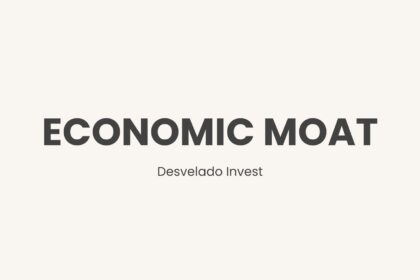Written By: Mridul Mishra
Financial literacy is a key driver of wealth creation and a life of financial independence. Yet, for many, building a solid financial plan seems daunting. With a diverse range of options for investment, risk management, and savings, many individuals in India find themselves overwhelmed by choices. This guide will walk you through the essentials of personal finance for Indian readers, covering foundational topics in-depth to help you set your financial goals and achieve them through strategic planning.
Let’s start with the fundamental building blocks, like understanding the power of compounding, which plays a critical role in wealth accumulation.
Why Saving Alone Isn’t Enough
Merely saving isn’t a solution to building wealth, especially in India, where inflation can erode purchasing power significantly. With annual inflation averaging around 6-7%, money kept idle in a savings account grows at a rate slower than the inflation rate. This results in a gradual decline in purchasing power over time. Instead, investing in options that outpace inflation, like equity mutual funds or NPS, is essential for wealth creation.
The Power of Compounding: Importance of using SIPs
Albert Einstein once famously described compounding as the “eighth wonder of the world.” In financial terms, compounding occurs when the earnings from an investment are reinvested, allowing the initial investment to grow exponentially over time. In India, with popular investment options like Fixed Deposits (FDs), the Public Provident Fund (PPF), mutual funds, and stocks, the benefits of compounding are available for everyone to harness.
Suppose you invest ₹20,000 per month at an annual interest rate of 14%. Here’s how it would grow over the years:
| Year | Principal (₹) | Interest (₹) | Total (₹) |
| 5 | 1,20,000 | 48,598 | 1,68,598 |
| 10 | 2,40,000 | 1,15,892 | 3,55,892 |
| 15 | 3,60,000 | 2,08,040 | 5,68,040 |
| 20 | 4,80,000 | 3,39,736 | 8,19,736 |
| 25 | 6,00,000 | 5,39,040 | 11,39,040 |
This example illustrates how your ₹6,00,000 can grow to over ₹11 lakh in 25 years, purely by the power of compounding. The longer you stay invested, the greater your wealth grows.
Investing for Singles vs. Families
When single, you can prioritize high-growth assets since you have fewer dependencies. However, when family obligations arise—supporting parents or raising children—it’s crucial to maintain a balanced portfolio with increased allocations in stable, debt-based instruments for emergencies. With family, consider child education funds, health insurance, and life insurance to cover future expenses.
Start Early, Reap More
Starting early has unmatched benefits because of compounding. Let’s compare two hypothetical scenarios to emphasize this:
- Person A starts investing ₹5,000 monthly at age 25 with an average annual return of 14%.
- Person B starts investing ₹12,000 monthly at age 35 with the same returns.
If both decide to stop at 60, here’s what their wealth accumulation would look like:
- Person A’s investment will accumulate to approximately ₹1.9 crore by age 60.
- Person B’s investment will grow to approximately ₹1.59 crore by age 60.
Even though both are investing consistently, starting 10 years earlier makes Person A’s wealth is much higher considering post 60 neither will have much earning potential. However, if you’re starting late, you can make up by increasing your monthly contributions or investing in higher-return instruments (while managing the increased risks).
Being prepared for a rainy day: Building an Emergency Cash Reserve
An emergency fund is essential to ensure you can sustain yourself and cover essential expenses if unexpected situations like job loss or illness arise. The size of the emergency reserve should be based on your job stability and risk of job loss.
| Profession | Stability Level | Emergency Reserve (Months of Expenses) |
| Government Employee | High | 3-6 months |
| Private Sector (Tech) | Moderate | 6-9 months |
| Freelancers | Low | 9-12 months |
| Entrepreneurs | Variable | 12-18 months |
Building a sufficient cash reserve provides a safety net that keeps you from having to withdraw investments prematurely.
Where to Put Your Money: Asset Allocation Across Life Stages
In India, where family responsibilities and cultural expectations play a huge role, having the right asset mix at each stage of life is crucial for financial stability and growth.
- Young and Single: At this stage, you can afford to take higher risks. A mix of 80% equities (stocks, equity mutual funds) and 20% in debt instruments (PPF, FDs) allows for aggressive growth with a small safety net.
- Early Family Stage: As family responsibilities grow, consider a 60-40 equity-debt mix. Begin securing yourself with life and health insurance.
- Mid-Life and Near Retirement: By this stage, stability becomes crucial, so a balanced portfolio (40% equity, 60% debt) can help preserve wealth while still providing moderate growth.
- Retirement Stage: With income ceasing, prioritizing capital preservation becomes essential. A 20% equity and 80% debt allocation is generally ideal for a steady income without risking principal.
Psychology of Investing: Wealth-Building for Different Income Levels
Regardless of income, wealth-building requires a disciplined approach:
- Low Income (₹20,000/month): Prioritize emergency savings and low-risk instruments like recurring deposits or PPF. Track every expense and find small ways to save, investing whatever surplus you have consistently.
- Middle Income (₹1,00,000/month): Focus on diversified investments, such as mutual funds, while maintaining a 6-month emergency fund. Contribute to retirement plans like NPS and maximize tax-saving investments.
- High Income (₹3,00,000+/month or Business): Take advantage of direct stock investments, tax-saving instruments, and high-value mutual funds. Business owners can explore investment-linked insurance plans for tax benefits and capital growth.
Reverse Budgeting: Cutting Back Effectively
A reverse budget approach means starting by tracking your current expenses and then identifying and eliminating unnecessary ones. You first establish your expenses, then work backwards to find where savings can be made. This allows flexibility in spending while pinpointing areas where cutbacks are feasible. For example, if you’re spending ₹15,000 monthly on dining out, aim to reduce it by 30% and invest those savings instead. Tracking expenses with apps like Walnut or Money View can help identify patterns and guide budget adjustments.
Insurance: The Safety Net
Life and health insurance are essential, especially term plans. While corporate health insurance provides coverage, it might not suffice in emergencies, especially post-retirement. Consider riders like critical illness, accidental death, or waiver of premium for added protection. Term insurance is recommended as it provides maximum coverage for a lower premium, ensuring family security if the worst happens.
Where to Invest: Comparison of Investment Options in India
| Investment Venue | Pros | Cons | Expected Returns | Pitfalls |
| Stocks | High returns potential, liquidity | High volatility, requires research | 10-15% annually | Emotional trading, speculation |
| Mutual Funds | Diversification, professional management | Market risk, fees | 8-12% annually | Over-diversification |
| Fixed Deposits (FDs) | Safety, fixed returns | Low returns, tax on interest | 5-7% annually | Loss of purchasing power |
| PPF | Tax benefits, compounding | Lock-in period | 7-8% annually | Inflexibility |
| National Pension Scheme (NPS) | Retirement-focused, tax benefits | Long lock-in, limited withdrawal | 8-10% annually | Limited liquidity |
| Real Estate | Tangible asset, potential appreciation | Illiquidity, high transaction costs | 5-10% annually | Cyclic market risks |
| Gold | Hedge against inflation, easy to liquidate | No income, storage cost | 5-7% annually | Price volatility |
DO NOT HAVE FOMO! : Things people fall for to get-rich-quick.
Avoid engaging in risky financial behaviours that can erode wealth and cause unnecessary losses.
- Avoid Day Trading: Without expertise, day trading often leads to losses due to market volatility.
- Don’t Rely on Stock Tips: Unverified tips can result in substantial losses, as these tips are often unresearched and speculative.
- Beware of Get-Rich-Quick Schemes: Schemes that promise high returns with little to no risk are often scams. Genuine wealth-building requires time, patience, and strategy.
- Steer Clear of High-Risk Debt Investments: High returns often mean high risks, especially in unregulated markets.
- Don’t Chase Past Performance: Just because an asset performed well in the past doesn’t mean it will in the future. Diversify and avoid letting FOMO drive investment decisions.
All the best for your investment journey!






